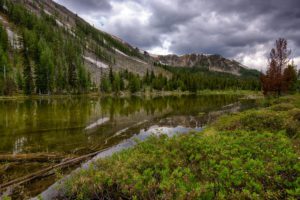For Immediate Release—August 4, 2021
Contact:
Jocelyn Leroux, Western Watersheds Project, (406) 960-4164; jocelyn@westernwatersheds.org,
MISSOULA, Mont.—Montana Fish, Wildlife, and Parks (MFWP) officials released a proposal to open portions of fourteen Wildlife Management Areas (WMAs) in the state for emergency livestock grazing and haying operations. The agency seeks to accommodate drought-affected livestock producers without acknowledging the substantial impacts of the drought to wildlife and their dependence on WMAs for habitat.
“It is troubling that Montana is concerned with protecting the profits of private industry over the needs of wildlife and the health of ecosystems, especially on lands that are supposed to be set aside for wildlife,” said Jocelyn Leroux, Montana Director for Western Watersheds Project. “While there is no denying that livestock producers are being impacted by this drought, it’s irresponsible to throw Montana’s wild animals under the bus with no regard for the possible long-term impacts to their populations.”
According to the U.S. Drought Monitor, eighty percent of Montana is experiencing severe to exceptional drought. Impacts of the drought are broad reaching and have resulted in countless wildfires and the complete closure of numerous streams and rivers for fishing. Wildlife such as elk, deer, ground nesting birds, amphibians, ground squirrels, rabbits, and many more depend on vegetation structure that will be removed by the proposed livestock grazing and haying on the WMAs. In total, MFWP is proposing to open up approximately 8,500 acres for livestock use, claiming that all impacts will be temporary, minor, and/or inconsequential.
Yesterday’s proposal is just one of many this year designed to enable continued livestock grazing but neglecting to address the adverse impacts of the drought to fish and wildlife in Montana. In July, Governor Gianforte urged US Department of Agriculture Secretary Tom Vilsack to open up all of Montana’s Conservation Reserve Program (CRP) acres to emergency livestock use. The CRP is a land conservation program that pays landowners to remove land from agricultural production and plant native species to enhance water retention, soil stability, and wildlife habitat. Also in July, Montana Senator Steve Daines and Representative Matt Rosendale asked Secretary of the Interior Deb Haaland to allow emergency livestock grazing on the Charles M. Russell National Wildlife Refuge due to drought conditions.
“With the impacts of climate change steadily increasing, this drought could be a tipping point for many native wildlife populations in Montana,” said Leroux. “It is critical that officials in Montana start to recognize the immense value of protecting our native wildlife and ecosystems and conserving their habitats, especially under the stress of drought.”
MFWP is accepting written comments on the proposal until 5pm on August 13. More information is online at: https://fwp.mt.gov/public-






